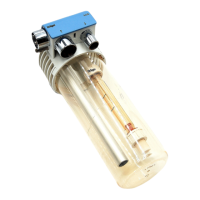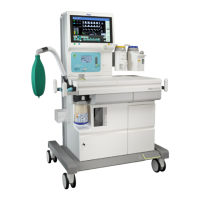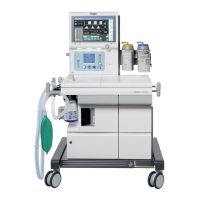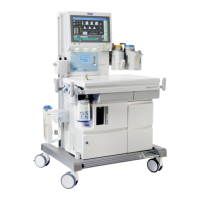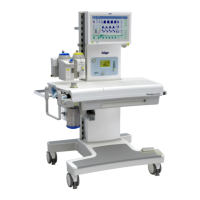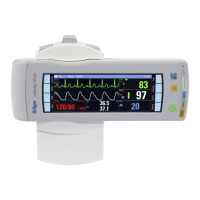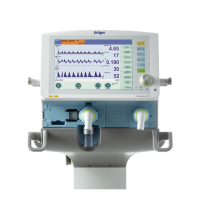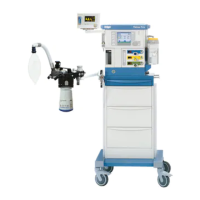Overview Chapter 12 - Troubleshooting
Apollo Operator’s Manual 191
Part Number: 90 38 237, 5th edition
Overview
This section discusses several types of failure that
may occur on the Apollo and provides courses of
action following the failure. An alphabetical list of all
Apollo alarms and their causes and remedies is
provided on page 197.
Note: If the remedies suggested in this section do
not resolve a fault that may impair the proper
functioning of the Apollo, use another device.
Figure 158. Power Fail Alarm MessagePower Failure
In the event of power failure the Apollo automatically
switches to the built-in uninterruptible power supply
(battery backup).
Provided that the battery is fully charged, operation
will be continued for at least 30 minutes (up to 90
minutes, depending on the ventilation parameters).
The message “POWER FAIL” is displayed in the
status field on the screen (1 in Figure 158), together
with the remaining battery capacity in percent (2 in
Figure 158).
If the battery is almost depleted, the message
“BATTERY LOW” will be displayed.
Apollo permits manual ventilation with 100% O
2 in
the event of a power failure and depleted battery. The
fresh gas measurements, ventilator, and monitoring
are inactive.
In case of power failure:
•Close N
2
O and air flow valves
• Check vaporizer setting
•Set O
2
flow to the desired level using the total
flow meter
• Ventilate the patient manually
Note: Refer to the total flow meter for approximate
flow (see the Specifications section of the
manual for accuracy).
1
2
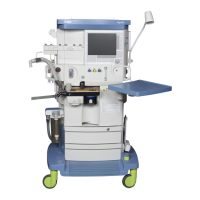
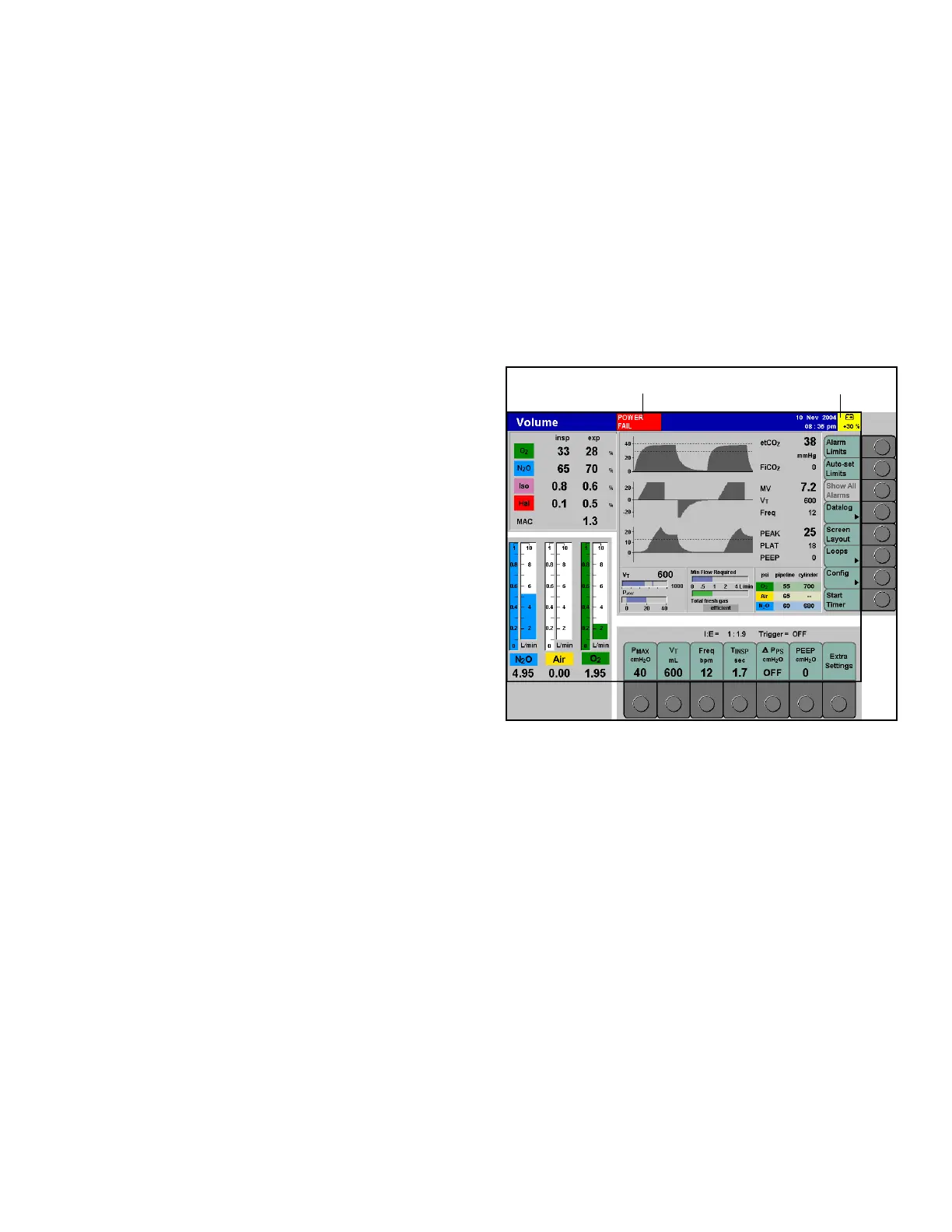